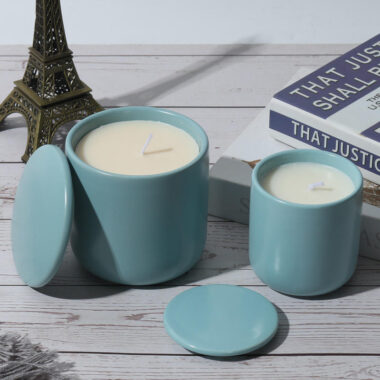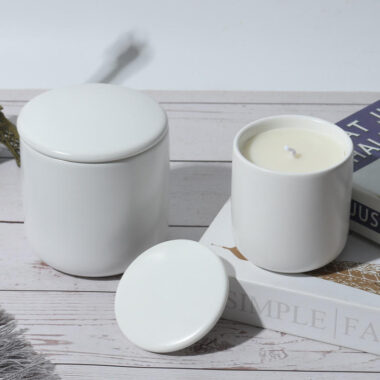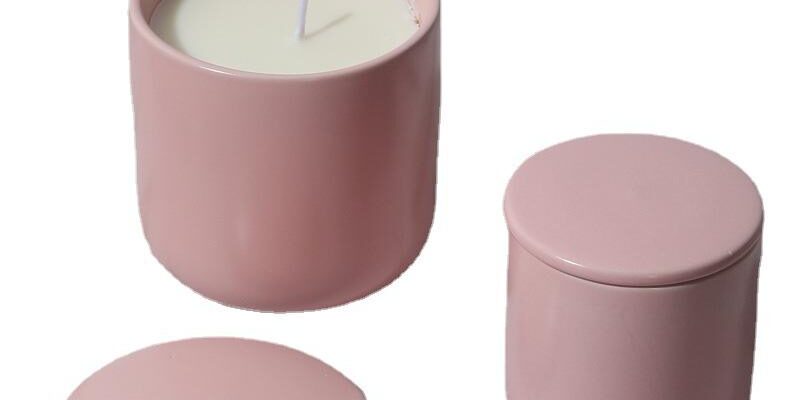🔍 Understanding Wet Spots and Frosting
When candles are poured into glass candle jars, two of the most common quality issues are wet spots and frosting. Wet spots appear as cloudy patches where wax has pulled away from the jar wall, while frosting shows up as a white, crystalline layer on the wax surface.
These issues do not usually impact safety, but they do affect visual appeal—something that matters greatly in retail presentation and brand positioning. Solving them requires an understanding of materials, temperature control, and supplier consistency.
🧪 Causes of Wet Spots
Wet spots occur when wax contracts and detaches from the glass as it cools. Several factors influence this:
-
Temperature Differential: If wax cools too quickly, it shrinks and pulls away from the jar wall.
-
Jar Surface: Dust, oil, or moisture on the inside of the jar prevents proper adhesion.
-
Wax Type: Natural waxes like soy contract more than paraffin, making wet spots more common.
👉 Buyers sourcing in bulk often review supplier pouring lines. A factory offering stable processes through Candle jar wholesale ensures more consistent adhesion and fewer defects.
❄️ Causes of Frosting
Frosting is caused by polymorphic crystallization—the natural tendency of soy wax molecules to realign over time. It’s particularly visible in clear glass containers. Factors that increase frosting include:
-
High Pouring Temperatures: Can accelerate crystallization.
-
Frequent Temperature Swings: During storage or shipping.
-
Improper Additives: Inconsistent stabilizers fail to slow the process.
While frosting cannot be eliminated entirely from soy wax, it can be minimized with proper controls.
🔥 Best Practices to Reduce Wet Spots
To minimize wet spots in production:
-
Pre-Heat Jars: Warming jars to ~40–50°C before pouring wax reduces temperature differential.
-
Control Cooling: Allow candles to cool slowly in a controlled environment (avoid cold drafts).
-
Clean Surfaces: Ensure jars are free of fingerprints, moisture, and dust before filling.
Factories with climate-controlled pouring rooms achieve significantly lower defect rates.
❄️ Strategies to Minimize Frosting
For frosting control, production teams should:
-
Use Stabilizers: Additives like stearic acid or specialized blends slow down crystallization.
-
Adjust Pouring Temps: Pour soy wax at slightly lower temperatures (50–60°C) to reduce instability.
-
Choose Frosted or Coated Glass: A frosted finish makes frosting less noticeable to the end consumer.
Retailers who prioritize premium aesthetics often turn to Luxury Candle Jar Manufacturer partners for coated finishes that mask frosting.
📦 Quality Assurance and Testing
Before approving a bulk order, brands should run burn tests and storage tests:
-
Place samples in fluctuating temperature environments (15–30°C).
-
Track visual changes over 2–4 weeks.
-
Record adhesion and frosting consistency across different jar batches.
This proactive approach reduces the risk of large-scale defects showing up after shipment.
🌍 Impact on Branding and Retail Sales
For premium candle lines, visible wet spots or frosting can undermine the product’s value perception. Customers equate visual flaws with poor quality—even if performance is unaffected. By addressing these issues during production, brands:
-
Reduce returns and complaints.
-
Build stronger retail partnerships.
-
Protect premium positioning in competitive markets.
✅ Final Takeaway
Wet spots and frosting are not just cosmetic nuisances—they are indicators of production quality and supplier control. By managing temperature, surface prep, and jar finishes, candle brands can deliver a consistent, retail-ready product that strengthens their brand story.
When planning your next line, work closely with suppliers who provide both technical guidance and production stability. With the right glass candle jar partner, these common defects become manageable challenges rather than ongoing frustrations.









